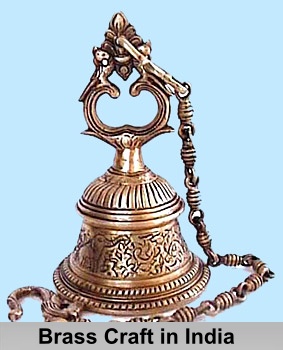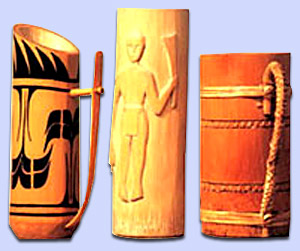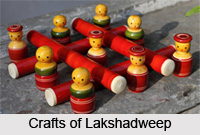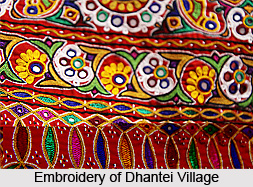 India boasts of a rich cultural heritage that is reflected in the indigenous artistry through various crafts. Among these, brass craft stands out, capturing the essence of ancient traditions and artistic finesse. The allure of brass craft from India transcends borders, finding admirers across the globe. From the sheets of brass emerge marvellous objects of art, reflecting the nation`s deep-rooted history in metal engraving, dating back to the Vedic era.
India boasts of a rich cultural heritage that is reflected in the indigenous artistry through various crafts. Among these, brass craft stands out, capturing the essence of ancient traditions and artistic finesse. The allure of brass craft from India transcends borders, finding admirers across the globe. From the sheets of brass emerge marvellous objects of art, reflecting the nation`s deep-rooted history in metal engraving, dating back to the Vedic era.
History of Brass Craft in India
The journey of brass craft in India can be traced to archaeological findings in pre-Harappan sites of Baluchistan and Kali Bangan in Rajasthan. Tools dating back to 300 B.C. reveal the existence of metal ware in the Indian subcontinent. The craft, rooted in ancient traditions, has evolved into a mesmerizing process of transforming brass sheets into intricate works of art.
Procedure of Brass Crafts
The intricate procedure of brass craft blends engraving and lacquer to create awe-inspiring masterpieces. Initially, a thin coating of lac is meticulously applied to the article, serving as a canvas for the forthcoming engraved wonders. The process commences with the tracing of a design onto the metal ware, outlining the path for the artisan`s controlled-strokes with the thapi on the chisel. This creativity takes on three distinct styles, namely chikan, boasting bold flower motifs that stand out against the chased and lacquered surface, marori, featuring minute lacquered patterns covering the entire expanse, and bidri, showcasing intricate leaves and flowers in an all-encompassing design on a chased and lacquered background.
This meticulous craftsmanship extends beyond the surface, delving into the very material itself. The preparation involves melting the required material in a crucible before carefully pouring the molten metal into an earthenware container. Once set, the metal undergoes a metamorphosis through repeated hammering and beating, ultimately taking on the desired shape. Occasionally, a single item is crafted from two or three separately made pieces, ingeniously joined with rivets. The artisan`s touch doesn`t stop there; surfaces may bear intricate engravings, ranging from floral and geometric patterns to human and animal figures. Some items even receive the embellishment of enamel paints, adding a vibrant layer to the craftsmanship. As the beat of the thapi resonates, diverse designs emerge, reflecting the rich traditions from different regions.
Features of Brass Craft
Brass emerges as a champion among all the metal, reigning supreme for its unparalleled features. A metal alloy, seamlessly blending copper and zinc, brass stands at the pinnacle of the list of preferred metals globally. Highly resistant to corrosion, it showcases anti-corrosive properties that make it a stalwart in various industries. The electroplating process becomes the alchemy that transforms brass, shedding any layer that might sow the seeds of rust or corrosion. This metamorphosis renders brass not only durability and weather-resistant properties but also makes it aesthetically pleasing.
The popularity of brass handicraft items finds its roots in these distinctive features. The surge in its usage across industrial equipment, utility items, and household goods over the last decade attests to its growing acclaim. Experts affirm that the electroplating process is a crucial step, eliminating any potential threat of rust or corrosion in the future, solidifying brass`s position as a superior choice among metals. Whether adorning textiles or enhancing the beauty of handicraft decor items, brass not only proves to be utilitarian but also gains an edge over other metals. Its low maintenance cost, ease of use, and robust strength further enhances it functionality to become a symbol of enduring craftsmanship.
Various Types of Brass Craft
India showcases a kaleidoscope of brass craft, each region contributing to the mosaic of artistic expression. Pembarthi Metal Craft, a distinguished metal handicraft from Pembarthi in the Warangal district of Telangana, unfolds artistic finesse on brass. Flourishing during the Kakatiya empire, this craft is renowned for its exquisite sheet metal artworks. The Kakatiyas, during their reign, extensively utilized sheet metal art to embellish chariots and temples, leaving an indelible mark on the legacy of this intricate craft.
The Kamrupi Brass and Bell Metal products of Kamrup, Assam, stand as a beacon of beauty, strength, and utility. In Hajo, brass emerges as a vital cottage industry, with Sarthebari gaining recognition for its exceptional bell metal craft. Principal brass items, including the kalah (water pot), sarai (platter or tray mounted on a base), kahi (dish), bati (bowl), lota (water pot with a long neck), and tal (cymbals), showcase the diversity and utility inherent in Kamrup`s brass craftsmanship. Gold, silver, and copper, integral components of traditional metalcraft in Kamrup, find a rich display at the State Museum in Guwahati, predominantly used for ornamental purposes.
Budithi Bell and Brass Craft, originating from the village of Budithi in the Srikakulam district of Andhra Pradesh, represent exquisite creations crafted from a brass alloy. Acknowledged for their unique qualities, this craft secured recognition as a geographical indication handicraft from Andhra Pradesh under the Geographical Indications of Goods (Registration and Protection) Act, 1999. This formal registration attests to the distinctive character and origin of the craft, aligning with the provisions set forth by the Geographical Indications of Goods (Registration and Protection) Act.
Artifacts of Brassware
The world of brassware artifacts encompasses a diverse array of items that showcase the artisan`s skill and creativity. From vases, perforated lamps, and table tops to fruit bowls, planters, and jewellery boxes, each piece shows the versatility of craftmanship with brass. Engraved motifs, ranging from delicate flowers to intricate landscapes and geometric patterns, embellish these masterpieces, adding an artistic touch to their functional form.
Brassware items cover a broad spectrum, including essential household items like thali, plates, kansa, tumbers, water containers, and buckets. The beating process, a hallmark of brass craftsmanship, yields plates or thali, deep round containers known as Kansa, small containers or `gina` (tumbers), water containers or gara, and buckets or baltis. This process also brings to life large cooking utensils and storage vessels called handi, along with various types of pots and pans, ladles or Chatu, and perforated flat cooking spoons.
Brass casting, skillfully executed by Kansaris, introduces iconic representations like Radha Krishna, Laxmi, pot-bellied Ganesha, Vishnu, and the crawling Krishna known as Gurundi Gopal. Bells or ghanti, lamp stands or rukha, and lamps or dipa further enrich the repertoire of brass artifacts. These creations extend beyond mere utility, finding a place in rituals and worship, with items like the ghanta or gong and thali serving in the offering of food to deities. In the symphony of brass craftsmanship, each item is not just an object but a reflection of tradition, skill, and the enduring appeal of brass as an art form.
Centers of Brass Handcraft in India
India houses several centers of brass handcrafts. Pembarthi in Andhra Pradesh stands as an international hub for brass handicraft items. The craftsmanship of nearby temples like Lepakshi, Orugallu, and Ramappa serves as a wellspring of inspiration, featuring lotus designs, Hindu legends, and distinctive goose-shaped tops. Tirupati, another renowned location in Andhra Pradesh, further contributes to the rich heritage of brass handicrafts.
In Northern India, Varanasi and Mirzapur in Uttar Pradesh have deep-rooted ties to brass handicrafts, with Moradabad emerging as another notable center. Introduced by Muslim craftsmen bringing Persian techniques during their immigration, brass-making in these regions has flourished into a skilled tradition.
The states of West Bengal, Madhya Pradesh, and Odisha showcase their expertise through intricate jewelry crafted using the Dokra method. This technique involves creating a wax mold over a clay base, forming an exact replica by adding clay around the mold, which is then replaced with molten metal.
Kashmir, a region globally acclaimed for its handicrafts, produces handcrafted brass items adorned with almond, chinar leaf, and vine motifs. Ladakh, within Kashmir, gains recognition for its decorative brass stoves, handcrafted and often featuring the incorporation of copper and silver. These regions, each with its distinctive techniques and designs, play pivotal roles as centers of production for brass handicrafts in India.
In the rhythmic beats of the thapi and the delicate strokes of engraving, India`s brass craft has evolved from ancient traditions to modern innovations into a global art form. As brass items continue to grace homes, temples, and galleries worldwide, the legacy of Indian brass craft lives on in the enduring spirit of artistic expression of the craftsmen.






